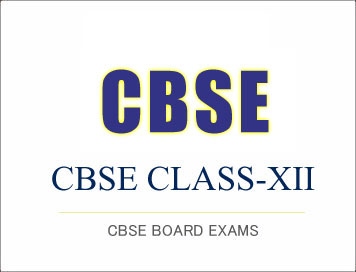(Download) CBSE Class-12 Sample Paper And Marking Scheme 2017-18 : Biotechnology
Disclaimer: This website is NOT associated with CBSE, for official website of CBSE visit - www.cbse.gov.in
(Download) CBSE Class-12 Sample Paper And Marking Scheme 2017-18 : Biotechnology
SECTION A
1. “cos” sites are important for packaging DNA into phage head. 1
2. Protein Efficiency Ratio PER is used as a measure of growth expressed in terms of weight gain of an adult by consuming1g of food protein.½ ½
3. The bond strength decreases due to the insulating properties / dielectric strength of water. 1
4. Gene is transferred with the help of tiny vesicles of bipolar phospholipids that fuse with the cell membrane, releasing the DNA into the cytoplasm. 1
5. Rous and Jones. 1
6.
|
BAC |
YAC |
|
Effective in Bacteria |
Effective in Yeast |
|
It has genes for maintenance and replication of F-factor |
It has telomere, centromere and ARS from yeast chromosome |
|
Can accommodate up to 300kb of DNA |
can be used for cloning DNA upto 1 MB in size. |
(Any two)
SECTION B
7. Tissue engineering :Naturally derived or synthetic materials may be engineered into "scaffolds" that when implanted in the body could provide a template that allows the body’s own cells to grow and form new tissues Such implants could function without triggering immune responses. Genetically-modified animals may also provide a source of cells, tissues, and organs for xenografts. 1
8. Metagenomics approach has been developed to identify and select microbial genes synthesizing novel molecules. This approach directly utilizes the large number of microbial genomes present in an environmental niche, for example in soil, in water such as ocean or in human gut. These genomes are contributed by both the culturable and the non-culturable variety of microbes and together constitute what has been termed as metagenome
The collective DNA is extracted from a sample of soil, water or any other environmental niche. It is subjected to restriction digestion using restriction endonucleases and the fragments are cloned into suitable vectors. The clones are then screened for presence of a variety of molecules.
9. Plant regeneration pathways The plants can be regenerated by either organogenesis and somatic embryogenesis. Organogenesis means formation of organs like shoots from the cultured explants .Miller and Skoog experimentally proved that formation of shoot or root first on the cultured tissue depends on the relative concentration of auxin and cytokinin. If auxins are high in the medium, then it promotes rooting while if cytokinins are high, shoot formation is promoted.
In somatic embryogenesis, the totipotent cells may undergo embryogenic pathway to form somatic embryos ,which can be grown to regenerate into complete plants. Generally, somatic embryos resemble the zygotic embryos (seed embryos) except in their place of origin and larger size. For the first time, Steward in 1958 and Reinert in 1959 independently reported the somatic embryogenesis from carrot cultures.
10
1. Transformation : In this technique. we put the recombinant DNA in the medium having host cells .Host cells will uptake the desired DNA provided the host cells are competent .If they are not competent , we make them competent by treating it with the cold calcium chloride.
Mandel and Higa proposed the technique in 1970.
2.Trasfection : The desired DNA is mixed with the cationic liposome’s or dextran and layered on the host cells and is then taken inside by the host cells.
3.Electroporation : We pass electricity of desired voltage through the culture of the cells resulting in transient ( temporary ) pores in the cell membrane and through these pores DNA enters.
